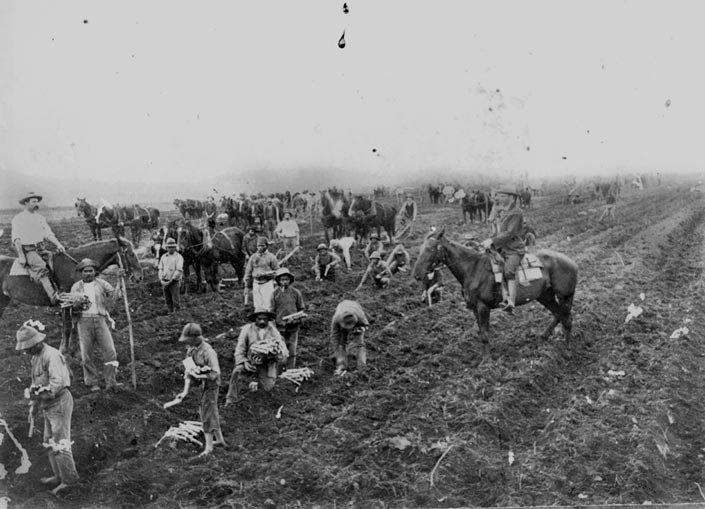 Pacific Islander labourers planting sugar cane, Mackay, 1870s
Pacific Islander labourers planting sugar cane, Mackay, 1870s
TLF ID R8003
This is a black-and-white photograph showing large groups of poorly dressed indentured Pacific Islanders planting sugar cane on a plantation at Mackay in Queensland. Fourteen or more Pacific Islanders are manually placing sugar-cane cuttings at regular intervals in long furrows. Two mounted white men oversee their work while others appear to be supervising on foot. In the background several horsedrawn ploughs till more furrows in the extensive field.
